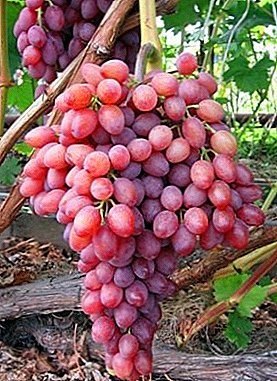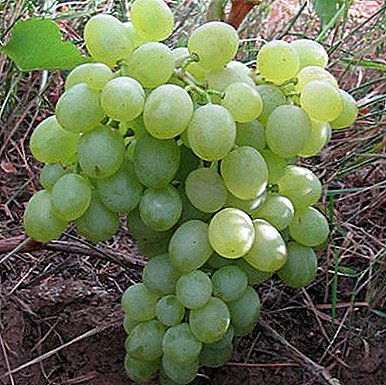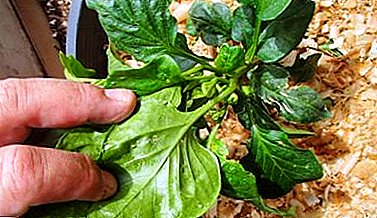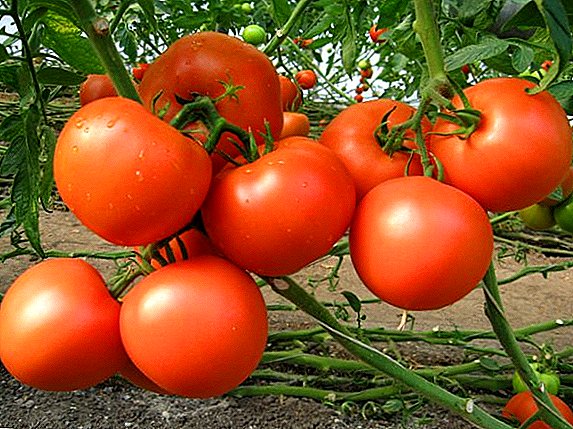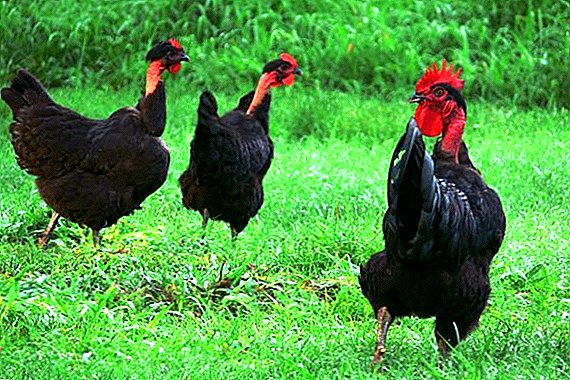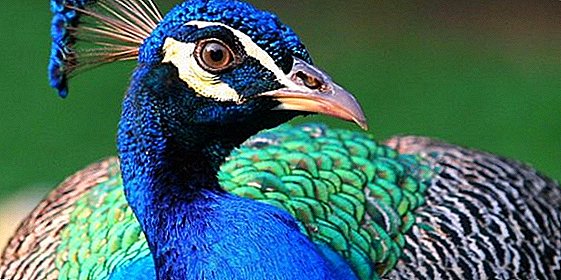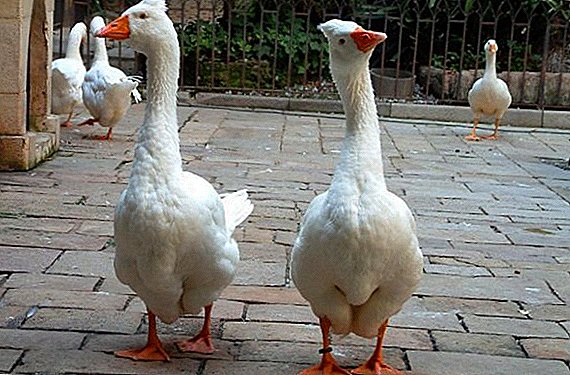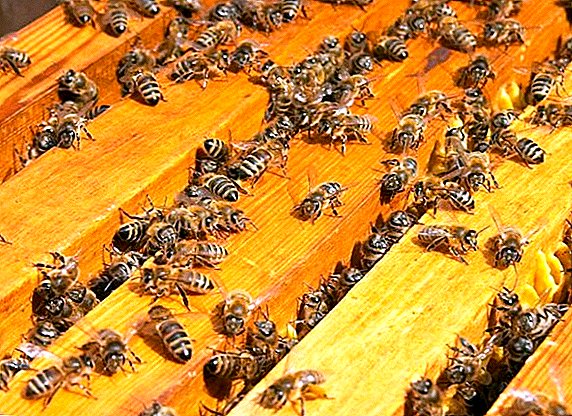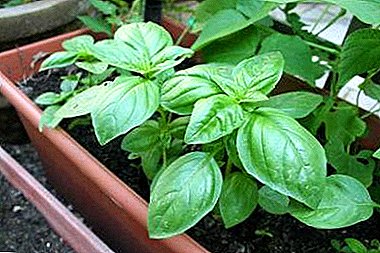
Basil has a rich taste, aroma, as well as a lot of useful properties. The greatest benefit will be from plants grown in their own garden or windowsill. One of the key steps in the care of basil is its timely transplant.
Let us consider in more detail in the article how to properly transplant a plant in a garden bed or in a pot and how to care for it in the future.
And also we will tell about which soil is better to choose for the cultivation of basil and what problems may arise after transplantation.
Can this be done and when is it better?
Yes you can. Basil is a perennial plant, therefore planting from a pot to the ground or vice versa, transplanting from a garden to a pot is an essential procedure for growing it. At the onset of the first autumn cold, in late August - in September, the adult plant must be protected from freezing by bringing it into the room.
At the same time, when stable and warm weather is established in spring or early summer, when the danger of night frosts is no longer present, seedlings can be planted in the ground. This is done when the plant will form two full sets of leaves. This usually occurs on the 35-50 day after the appearance of the first shoots.
Suitable soil
Basil for active growth requires a fertile and well-groomed soil. It does not tolerate heavy clay soils, but it feels great in well-drained, heated land. As for the soil for seedlings, its optimal composition for the first shoots of basil will be a mixture of humus or compost, peat and washed sand (2: 4: 1).
Transfer to the garden
 Since basil is a thermophilic culture, it is best to grow it through seedlings, which will later be planted in the ground. Preparation of the soil in the garden should do in the fall. A bed is dug up to a depth of 20-25 cm and fertilizers are applied, it can be humus or compost (3-5 kg), superphosphate (22-25g) and potash salt (about 15g), calculated on 1m2 land.
Since basil is a thermophilic culture, it is best to grow it through seedlings, which will later be planted in the ground. Preparation of the soil in the garden should do in the fall. A bed is dug up to a depth of 20-25 cm and fertilizers are applied, it can be humus or compost (3-5 kg), superphosphate (22-25g) and potash salt (about 15g), calculated on 1m2 land.
In late spring or early summer, when there is no danger of repeated frosts and the soil has warmed up to 15 degrees, you can begin to plant seedlings. For basil, the most suitable place is a well-lit sun 6-8 hours a day, as well as sheltered from winds and drafts.
On the garden, sprouts are best arranged in rows at a distance of about 25 cm. Rows should also be 25 cm apart. Planting is done in small holes 7-8 cm in depth.
- Before planting a young plant in the recess should be poured about a liter of clean distilled water.
- Next, place the roots of the plant together with the earthy lump in the hole and sprinkle with earth.
- Then lightly press the ground around the sprout to remove the remaining pockets of air, and pour the rooting place.
Also Basil feels good under the covering material. Therefore, an excellent solution would be to plant it in a greenhouse or greenhouse, for example along the edge of a tomato bed.
The spicy smell of basil, though scares some pests, but at the same time attracts slugs and snails. In this regard, the soil under the bush can be powdered with ashes, sawdust or tobacco dust, which will create a kind of barrier between the plant and pests.
Pot transplant
Transplanting an adult plant in a pot is suitable for those who grow basil in the garden or in the garden and want to keep the plant with the onset of cold weather.
- The first step is to prepare a pot for basil. It can be plastic or ceramic, round or square. Approximate size - 1.5-2 liters.
- Drainage should be laid out on the bottom (gravel, crushed stone, expanded clay), which will ensure the outflow of excess moisture.
- Cover the ground. For basil, the land from the same garden where it grew in summer is perfect, but it is better to add some fertilizer to it and clean it of everything that is superfluous (garbage, stones, plant roots, insects, etc.). Pouring the soil into the tank, you need to make a recess, lightly tamp the surface and pour it into the hole of distilled water at room temperature.
- Further, young bushes selected on the garden, which have not yet had time to bloom, are pre-watered to soften the soil.
- Together with the earthy lump around the roots, they are carefully dug out of the soil, transplanted into a flower pot, without damaging the root system of the plant.
- They fall asleep with a small amount of earth and tamper around the transplanted plant so that it is better fixed on the new place. It should then remove all damaged parts or leaves of basil and pour again.
Further care
 In the garden basil should be pierced for planting density, periodically weed in order to avoid overgrowing with weeds and water moderately.
In the garden basil should be pierced for planting density, periodically weed in order to avoid overgrowing with weeds and water moderately.- It is important to avoid high soil moisture, otherwise basil will suffer from mold, and rot may occur on the plant. If this problem is detected, it is worth removing the damaged sheets and treating the bush with a fungicide.
- If you want to get a harvest of basil, and not its seeds, you should timely remove the inflorescences from young plants, then basil will produce new shoots.
- In a pot, basil grows well in well-drained soil and should not be in standing water. It can be watered once a day, preferably in the morning, so that the water can soak in and the plant does not stand in the water overnight.
- Also very important is the light regime for good plant growth indoors. You can put the pot on the windowsill on the south or south-east side, where it will receive the maximum amount of sunlight.
In winter, when the daylight period is very short, it is important to take care of additional lighting using special fitoglamps.
Possible problems
Sometimes, after a transplant, basil may start to hurt or disappear altogether. This is most often associated with the development of fungal diseases or mold. The reasons may be excessive moisture, overcrowding of plants, low light.
Preventing problems after a transplant is:
- compliance with suitable modes of humidity and light;
- ensuring free air circulation, but excluding drafts and wind;
- timely removal of damaged plants.
Basil transplantation is an important step in the process of growing it and will be successful if you follow some simple rules. But in the future, the plant will still make you happy with an excellent harvest.


 In the garden basil should be pierced for planting density, periodically weed in order to avoid overgrowing with weeds and water moderately.
In the garden basil should be pierced for planting density, periodically weed in order to avoid overgrowing with weeds and water moderately.